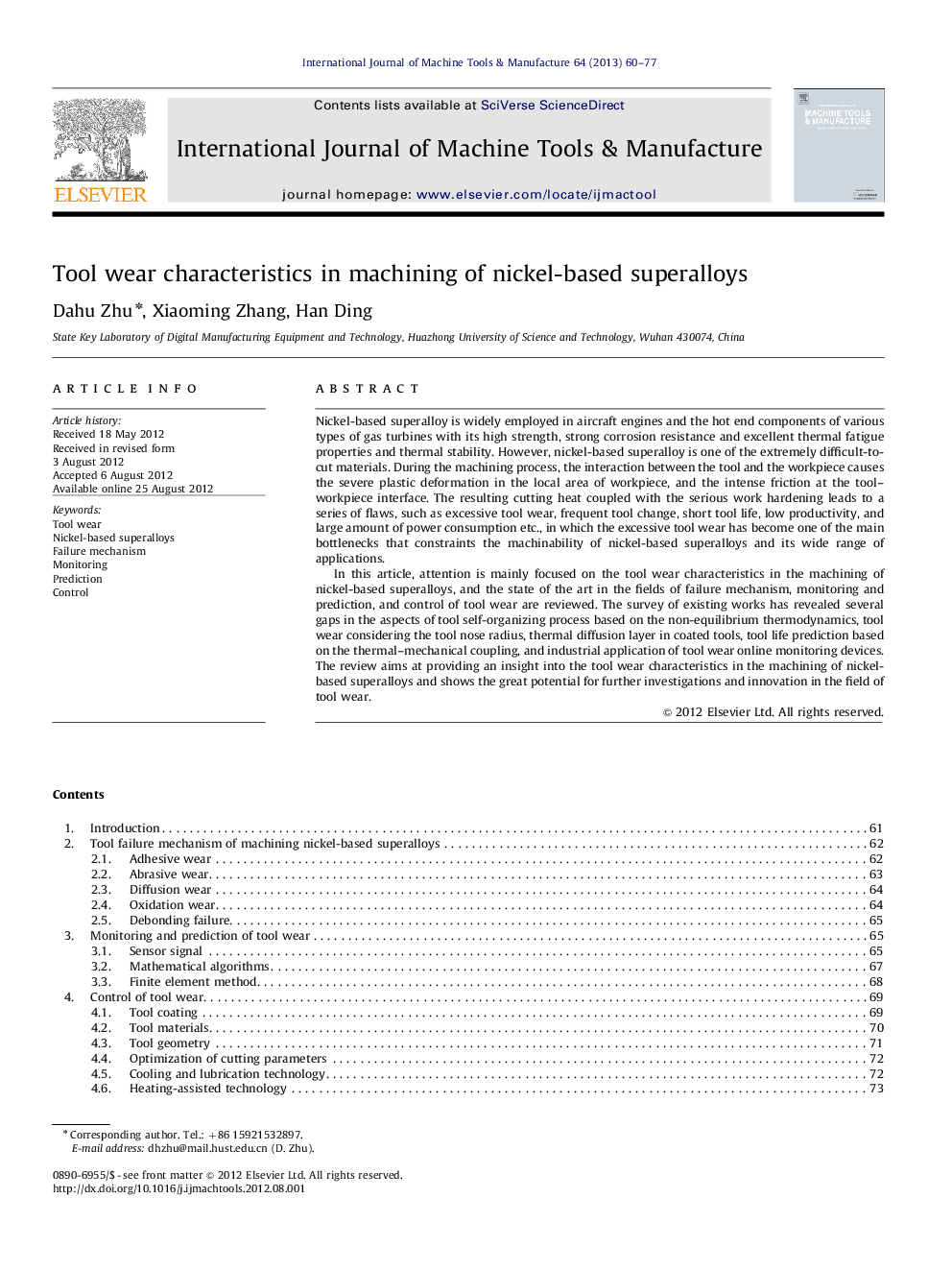| Article ID | Journal | Published Year | Pages | File Type |
|---|---|---|---|---|
| 784431 | International Journal of Machine Tools and Manufacture | 2013 | 18 Pages |
Nickel-based superalloy is widely employed in aircraft engines and the hot end components of various types of gas turbines with its high strength, strong corrosion resistance and excellent thermal fatigue properties and thermal stability. However, nickel-based superalloy is one of the extremely difficult-to-cut materials. During the machining process, the interaction between the tool and the workpiece causes the severe plastic deformation in the local area of workpiece, and the intense friction at the tool–workpiece interface. The resulting cutting heat coupled with the serious work hardening leads to a series of flaws, such as excessive tool wear, frequent tool change, short tool life, low productivity, and large amount of power consumption etc., in which the excessive tool wear has become one of the main bottlenecks that constraints the machinability of nickel-based superalloys and its wide range of applications.In this article, attention is mainly focused on the tool wear characteristics in the machining of nickel-based superalloys, and the state of the art in the fields of failure mechanism, monitoring and prediction, and control of tool wear are reviewed. The survey of existing works has revealed several gaps in the aspects of tool self-organizing process based on the non-equilibrium thermodynamics, tool wear considering the tool nose radius, thermal diffusion layer in coated tools, tool life prediction based on the thermal–mechanical coupling, and industrial application of tool wear online monitoring devices. The review aims at providing an insight into the tool wear characteristics in the machining of nickel-based superalloys and shows the great potential for further investigations and innovation in the field of tool wear.
Graphical abstractA review of the causes, mechanisms, types and consequences of the tool wear in cutting of nickel-based superalloys .Figure optionsDownload full-size imageDownload as PowerPoint slideHighlights► Machining of nickel-based superalloys often results in excessive tool wear. ► Tool wear is considered to be a result of mechanical and chemical interactions. ► Analytical, experimental, and FE methods are employed for analysis of tool wear. ► Novel assisted technologies can be applied into the effective control of tool wear. ► Thermal wear of tools should be of widespread concern in machining process.
